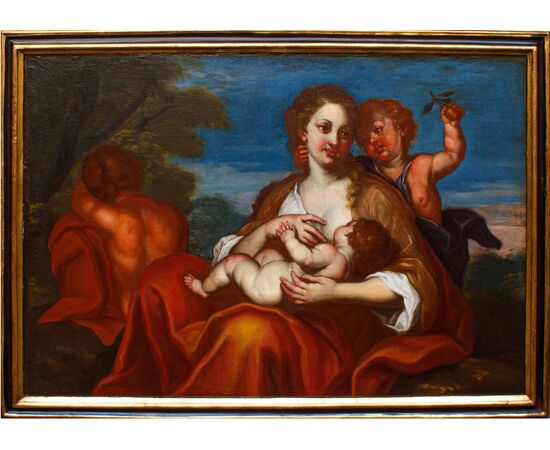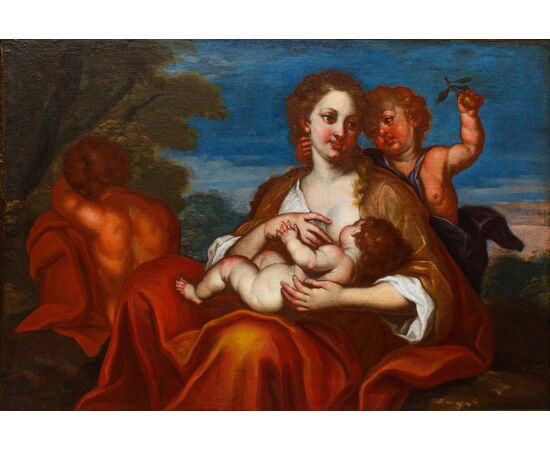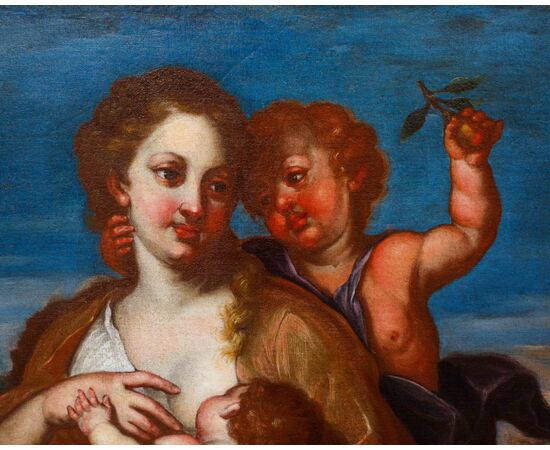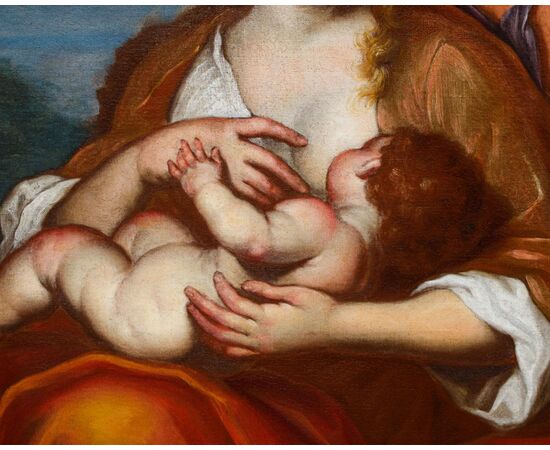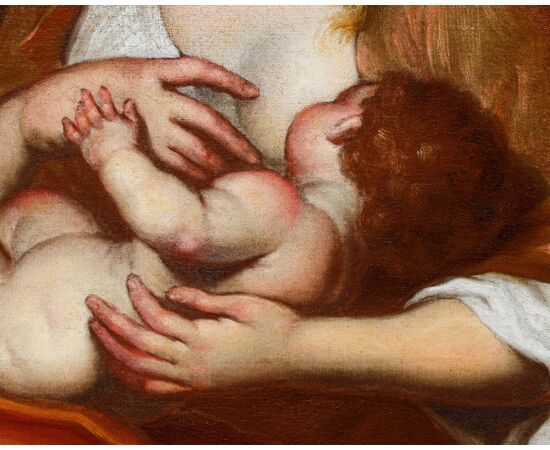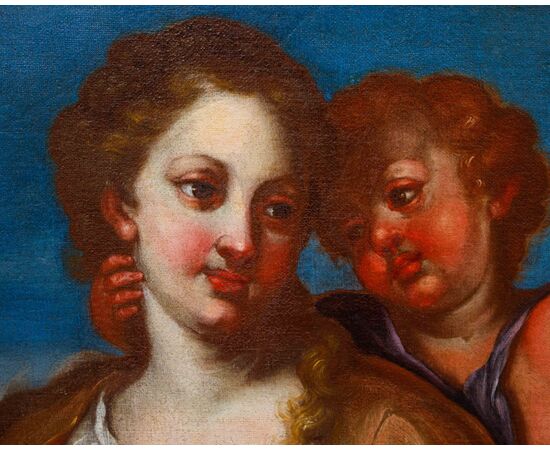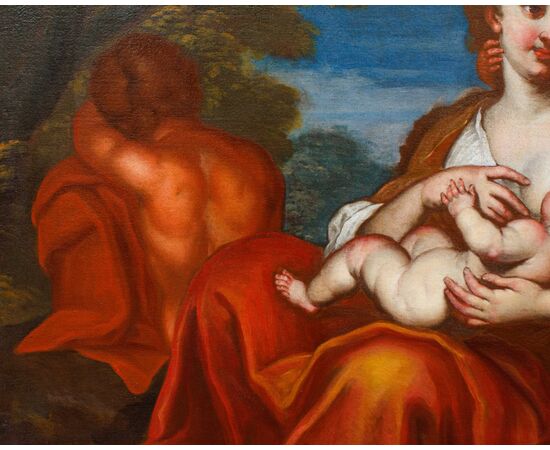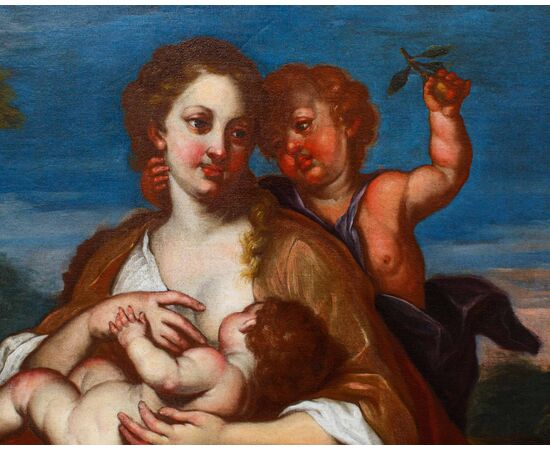Late 17th century, Venetian school, Allegory
Late 17th century, Venetian school
Allegory
Oil on canvas, 107 x 148 cm
This plastic group of three figures seems to offer a representation of the Allegory of Charity, the main one among the theological virtues. Both the subject and the composition with the young and flourishing female figure surrounded by children, one of whom has his head near her breast (as if having fallen asleep after breastfeeding), suggest this identification, even if the figure of the small child turned with his back is enigmatic. The iconographic solution corresponds to the most widespread type of Charity in 17th and 18th century painting. It derives from Cesare Ripa's Iconologia, which prescribes a red dress for the woman and three children close to her, one of whom attached to her breast.
The painting can be linked to the pictorial world of the Venetian territory of the late 17th century, linked above all to the pictorial style known as "tenebrist painting". Established in Venice by the impulse of the Neapolitan Luca Giordano and the Genoese Giovanni Battista Langetti, the line of the so-called tenebrists was a kind of reinterpretation of Caravaggism with even greater dramatic force. The Tenebrists exalted the violent contrasts between light and shadow, accentuating the formal chiaroscuro through typically Venetian colorism and the new predilection for the darker, harsher and wilder themes. The culture of the tenebrists influenced painters such as Bellucci and Sebastiano Ricci but also Pietro Negri, Johann Carl Loth and many others. See in comparison the Challenge of Apollo and Marsyas (Pan) of the Gemaldegalerie in Berlin, Venus and Mars of the Buonconsiglio castle in Trento and also the Flora and Holy Family of the Bavarian State Painting Collections of the painter of German origin Johann Carl Loth, also known as il Carlotto (Munich, 1632 - Venice, October 6, 1698), whose pictorial activity took place mainly in Venice. In the lagoon, Loth opened a workshop that was of great importance for the numerous German artists who were thus trained in the context of the taste of the Venetian tenebrists. Other references can be found in paintings such as Nero Examines the Body of Agrippina, 1670-79, Dresden, Gemäldegalerie Alte Meister by Pietro Negri (1628 - 1679) or in the Allegory of Pure Love by Antonio Zanchi (1632-1722), also painters who fuse the tradition of Venetian painting, made of color, with the language of the tenebrists, made of lights and shadows.

